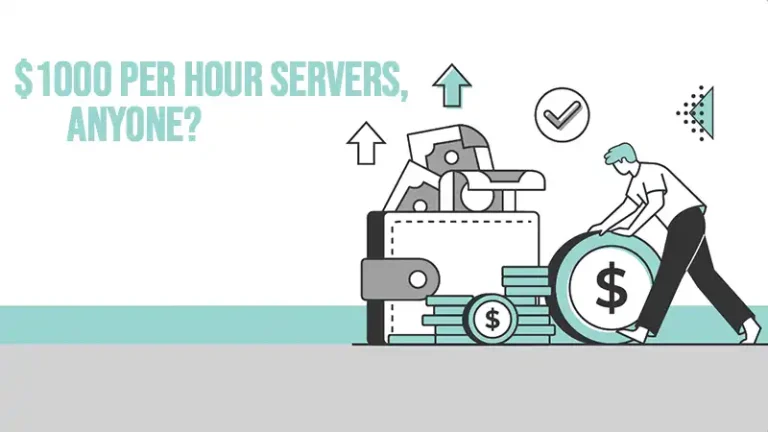How Is Caching Used To Improve Performance Of Web Application?
Just as a well-curated gallery provides a seamless experience, caching ensures that the digital canvas of the web is delivered swiftly and efficiently, delighting users with its speed and responsiveness. Caching improves the performance of web applications by reducing latency, decreasing server load, and enhancing scalability.
By storing frequently requested data or resources locally or in geographically closer servers (via CDNs), caching allows quicker data retrieval, lessening the burden on origin servers and databases. These results in faster response times, optimized network usage, and a better user experience, while also offering cost efficiency by minimizing the need for additional infrastructure and reducing data transmission. Let’s dig for more.

What Does Improved Performance Of Web Application Mean?
Improved performance of a web application refers to enhancements in how quickly and efficiently a web application responds to user interactions and requests. This encompasses several aspects:
1. Faster Response Times
The time it takes for a web page to fully load and become interactive. Faster page load speeds reduce user wait times and improve overall user satisfaction. The time it takes for the server to process and return responses to API requests. Faster API responses improve the interactivity of applications, particularly those that rely heavily on client-server communication.
2. Reduced Latency
The delay between sending a request and receiving a response. Reduced latency means that data travels more quickly across the network, leading to quicker interactions with the web application. The time taken by the server to process requests. Improved performance often means that the server processes requests more efficiently, reducing the overall time to respond.
3. Increased Throughput
The number of simultaneous requests a web application can handle effectively. Improved performance enables a web application to manage more concurrent users or transactions without degrading performance. Efficient use of server resources (CPU, memory, bandwidth) to handle a higher volume of requests or users.
4. Enhanced User Experience
A web application that responds quickly to user inputs (such as clicks, scrolls, or form submissions) provides a smoother, more engaging experience. Faster loading of web pages, images, and other content makes the application feel more responsive and decreases user frustration.
5. Optimized Resource Usage
Improved performance often results in reduced consumption of server resources, such as CPU and memory. This can lead to cost savings and more efficient use of infrastructure. Faster access to and retrieval of data, whether from a database or an external service, improves the overall efficiency of the application.
6. Better Scalability
Improved performance allows a web application to scale more effectively, managing higher volumes of traffic without a proportional increase in resource requirements. Efficiently distributing and managing loads across servers or instances to maintain performance during high-demand periods.
7. Reduced Errors and Downtime
Better performance often results in fewer timeouts, server errors, or failures, leading to a more reliable application. Improved performance can enhance the application’s availability, reducing downtime and ensuring users can access the service when needed.
8. Cost Efficiency
Efficient performance can lead to lower operational costs by reducing the need for additional servers or resources. This can result in lower infrastructure and maintenance expenses. Optimized performance often involves minimizing data transfers and reducing bandwidth usage, which can translate into cost savings, especially for high-traffic applications.
How Caching is Used Nail the Improvement
Let’s focus specifically on how caching improves the performance of a web application:
1. Reducing Latency
By storing copies of frequently requested data or resources, caching allows users to retrieve this information more quickly. For example, a web page’s CSS and JavaScript files stored in the browser cache can be loaded instantly from the local cache rather than being fetched from the server every time.
CDNs cache static resources at locations geographically closer to the user. When a user requests an image or video, it’s delivered from a nearby server rather than the origin server, reducing the time it takes for the resource to travel over the internet.
2. Decreasing Load on Servers
Caching reduces the number of requests hitting the origin server. For instance, if a web page is cached, the server doesn’t need to regenerate the page for every request, reducing CPU and memory usage.
Server-side caching of database queries means that expensive queries are executed less frequently. The results are stored in memory and retrieved quickly without hitting the database again.
3. Improving Response Times
Cached data can be retrieved much faster than recalculating or fetching it from a slower source, such as a database or an external API. For example, a cache of a query result in memory allows for sub-millisecond retrieval compared to the longer time required to execute the query on the database.
Page caching stores the fully rendered HTML of a web page. When a user requests that page, the cached version is served instantly, bypassing the time-consuming process of dynamically generating the page.
4. Enhancing Scalability
With a cached copy of content, a web application can handle more concurrent users without a proportional increase in server load. For example, during high traffic events, a cache can serve requests from its stored content rather than overwhelming the server.
Caching helps in managing server resources more effectively, allowing the application to scale horizontally by adding more servers or resources as needed, without constantly overloading the existing infrastructure.
5. Optimizing Network Usage
By serving cached content, the amount of data transmitted between the server and the client is minimized. This is particularly beneficial for high-traffic websites where bandwidth costs can become significant.
CDNs distribute cached content across multiple nodes, which helps in balancing the load and optimizing network paths. This results in faster load times and less congestion on the origin server.
6. Improving User Experience
Users experience faster loading times for resources that are cached, enhancing overall satisfaction and reducing bounce rates.
By leveraging caching, web applications can provide more consistent and reliable performance, even under varying load conditions.
7. Maintaining High Cost Efficiency
Lower server load and reduced database queries lead to cost savings. For example, fewer servers may be needed to handle the same amount of traffic, and database operations can be minimized, reducing database-related expenses.
Have A Quick Look
Here’s a concise view of how caching supports each performance requirement of a web application with key points.
| Requirements | How Caching is Used to Achieve This |
| Faster Response Times | Quick Data Retrieval: Cached data is retrieved faster than regenerating it. Pre-stored Content: Frequently accessed content like HTML, images, and scripts is served from cache. |
| Reduced Latency | Geographic Proximity: CDNs cache content closer to users. Local Storage: Browser caching reduces the need to fetch resources from the server. |
| Increased Throughput | Handling More Requests: Cached responses reduce server processing load. Efficient Request Management: Caching offloads demand from backend servers. |
| Enhanced User Experience | Faster Interactions: Quick access to cached content improves responsiveness.Reduced Waiting Time: Users experience quicker page loads and interactions. |
| Optimized Resource Usage | Reduced Server Load: Caching minimizes repeated computations and database queries. Lower Resource Consumption: Efficient use of memory and bandwidth. |
| Better Scalability | Efficient Scaling: Caching allows handling higher traffic without proportional resource increases. Load Distribution: Cached content helps manage larger volumes of requests. |
| Reduced Errors and Downtime | Fallback During Issues: Cached content serves as a backup if the server fails or is overloaded. Increased Reliability: Maintains availability during high load or server issues. |
| Cost Efficiency | Lower Infrastructure Costs: Reduces the need for additional servers and resources. Bandwidth Savings: Minimizes data transfer by serving cached content. |
Frequently Asked Questions
- What types of caching are commonly used in web applications?
Common types of caching include:
Browser Caching: Stores resources like images and scripts locally in the user’s browser.
Content Delivery Network (CDN) Caching: Distributes and caches content on servers around the world.
Server-Side Caching: Includes object caching, page caching, and opcode caching.
Proxy Caching: Uses caching servers to store responses from the origin server.
- What are the benefits of using a CDN for caching?
A CDN caches content on servers distributed geographically, which reduces latency and improves load times by serving content from a location closer to the user. This also helps offload traffic from the origin server.
- Can caching lead to security issues?
Yes, caching can potentially expose sensitive data if not managed properly. It’s important to configure caching policies to avoid storing private or sensitive information and to ensure that cache controls are set correctly to prevent unauthorized access.
To Sum Up
The benefits of caching extend to reducing server load, optimizing resource usage, improving scalability, and lowering operational costs. It can also help maintain application reliability by providing fallback content during high traffic or server issues.
However, effective cache management is essential to avoid issues such as stale data and security risks, ensuring that users receive accurate and up-to-date information.






![What Is A Difference Between The Functions Of Cloud Computing And Virtualization? [Answered]](https://www.iheavy.com/wp-content/uploads/2024/03/Functions-Of-Cloud-Computing-And-Virtualization-768x432.jpg)